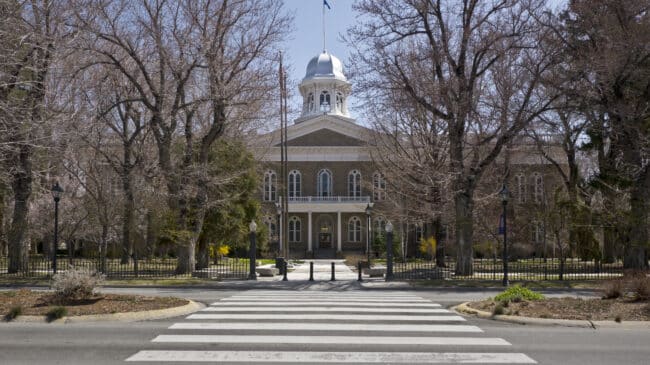A version of the following written comment was submitted to the Nevada Assembly Committee on Education on March 31, 2025.
Nevada A.B. 533 would make it easier for students to find a public school that best fits their needs. The legislation would let students attend public schools outside their attendance zone if space is available in their grade level. The proposal includes excellent transparency provisions, requiring the Nevada Department of Education to collect key open enrollment data annually, including the number of approved applicants, the number of denied applicants, and the reasons for their denials. Additionally, it ensures that districts cannot discriminate against transfer applicants based on their abilities or disabilities. Lastly, rejected applicants can appeal their denial to the Superintendent of Public Instruction. If codified, Nevada would be the 15th state to adopt a strong within-district open enrollment law.
Overall, it’s a strong bill since students could attend any public school inside their district with open seats regardless of where they live. It also would implement excellent transparency provisions at the state level.
However, A.B. 533 also falls short in important ways. It does not require districts to inform rejected applicants in writing why they were denied. Moreover, the Nevada Department of Education should publish the open enrollment data collected (Sec. 2.4.(e)) in an annual report on its website. This would put school districts’ transfer practices at the fingertips of families looking for transfer information and policymakers seeking to improve public schools for the state’s students.
Strong within-district open enrollment programs, like A.B. 533, help students attend schools that are the right fit. According to a 2023 Becker Friedman Institute report, Los Angeles Unified School District’s within-district open enrollment program positively affects participants, boosting student achievement and college enrollment, especially compared to non-participants. Moreover, the researchers found that the lowest-performing schools improved the most, making strong within-district open enrollment laws a win-win for students and schools.
Other research shows that many students use open enrollment to escape bullying, access Advanced Placement (AP) courses or specialized learning models, have smaller class sizes, or shorten their commutes.
According to national polling released by EdChoice in February 2025, open enrollment is supported by 74% of school parents. It also enjoys bipartisan support: 77% of Democrats and 74% of Republicans favor allowing families to attend schools across district lines. This is why open enrollment bills signed into law in Idaho, Montana, and West Virginia during the 2023 legislative sessions enjoyed significant bipartisan support.
Support for open enrollment isn’t just talk. In Colorado and Delaware, approximately 20% and 15% of students use within-district open enrollment, totaling nearly 160,000 students.
Adopting a robust open enrollment policy in Nevada would help ensure that public schools are available to all students and empower families to find public schools that are the right fit.

